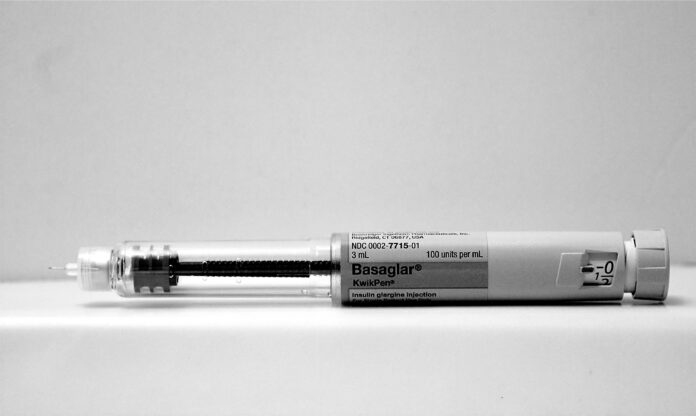
When it comes to managing diabetes, insulin is a crucial part of treatment for many people. If you or a loved one has been prescribed Basaglar insulin, it’s important to understand how this medication works and how to use it effectively.
In this comprehensive guide, we’ll cover everything you need to know about Basaglar insulin, including how it works, how to use it, potential side effects, and more. Whether you’re newly diagnosed with diabetes or simply looking to learn more about this medication, this article is for you.
Basaglar Insulin: What Is It?
Basaglar insulin is a long-acting insulin analog that is used to help control blood sugar levels in people with diabetes. It is a type of insulin called insulin glargine, which works by mimicking the action of the body’s natural insulin hormone.
Basaglar insulin is designed to provide a steady release of insulin throughout the day and night, helping to keep blood sugar levels stable. It is typically taken once daily, either in the morning or at bedtime, depending on your healthcare provider’s recommendations.
How Does Basaglar Insulin Work?
Basaglar insulin works by replacing the insulin that your body is not producing enough of. In people with diabetes, the pancreas either does not produce enough insulin or the body is unable to effectively use the insulin that is produced.
Basaglar insulin helps to lower blood sugar levels by enabling glucose to enter the body’s cells, where it can be used for energy. This helps to prevent high blood sugar levels, which can lead to complications such as nerve damage, kidney disease, and cardiovascular issues.
Basaglar Insulin: How to Use It
Using Basaglar insulin is relatively straightforward, but it’s important to follow your healthcare provider’s instructions carefully. Here are some general guidelines for using Basaglar insulin:
– Before injecting Basaglar insulin, make sure to wash your hands thoroughly with soap and water.
– Inspect the insulin vial or pen to make sure that the insulin is clear and colorless. If it looks cloudy or discolored, do not use it.
– Choose a clean injection site on your abdomen, thigh, or upper arm. Rotate injection sites to prevent skin irritation.
– If you are using an insulin pen, attach a new needle and dial up the correct dose of Basaglar insulin.
– Inject the insulin at a 90-degree angle into the skin, then hold the needle in place for a few seconds before removing it.
– Dispose of the needle in a puncture-resistant container and store the insulin vial or pen according to the manufacturer’s instructions.
It’s important to monitor your blood sugar levels regularly while using Basaglar insulin, as this will help you and your healthcare provider adjust your dosage as needed. If you have any questions or concerns about using Basaglar insulin, don’t hesitate to reach out to your healthcare provider for guidance.
Basaglar Insulin: Potential Side Effects
Like all medications, Basaglar insulin can cause side effects in some people. While most people tolerate Basaglar insulin well, it’s important to be aware of the potential side effects so that you can seek medical attention if needed.
Some common side effects of Basaglar insulin include:
– Injection site reactions, such as redness, swelling, or itching
– Hypoglycemia (low blood sugar), which can cause symptoms such as dizziness, sweating, and confusion
– Weight gain, a common side effect of insulin therapy
– Allergic reactions, which can cause symptoms such as rash, itching, or difficulty breathing
If you experience any persistent or severe side effects while using Basaglar insulin, be sure to contact your healthcare provider right away. They can help determine the best course of action to address your symptoms and ensure that you are using Basaglar insulin safely and effectively.
Basaglar Insulin: Precautions and Warnings
Before using Basaglar insulin, it’s important to discuss any potential risks or complications with your healthcare provider. Some precautions and warnings to keep in mind when using Basaglar insulin include:
– Basaglar insulin should not be used during episodes of hypoglycemia (low blood sugar) or hyperglycemia (high blood sugar). Make sure to monitor your blood sugar levels regularly and seek medical attention if your levels are outside of the normal range.
– Basaglar insulin should not be used by people with a known allergy to insulin glargine or any of the other ingredients in the medication. Be sure to inform your healthcare provider of any allergies you have before starting Basaglar insulin.
– Basaglar insulin may interact with certain medications or medical conditions. Be sure to inform your healthcare provider of all medications you are taking, as well as any medical conditions you have, before starting Basaglar insulin.
– Pregnant or breastfeeding women should consult with their healthcare provider before using Basaglar insulin, as this medication may affect pregnancy outcomes or breastfeeding infants.
By following these precautions and discussing any concerns with your healthcare provider, you can use Basaglar insulin safely and effectively to help manage your diabetes.
Conclusion
Basaglar insulin is a valuable tool for many people with diabetes, helping to keep blood sugar levels in check and prevent complications associated with high blood sugar. By understanding how Basaglar insulin works, how to use it, and potential side effects, you can make informed decisions about your diabetes treatment plan.
If you have been prescribed Basaglar insulin, be sure to follow your healthcare provider’s instructions carefully and monitor your blood sugar levels regularly. By working together with your healthcare team, you can effectively manage your diabetes and improve your overall health and well-being.












